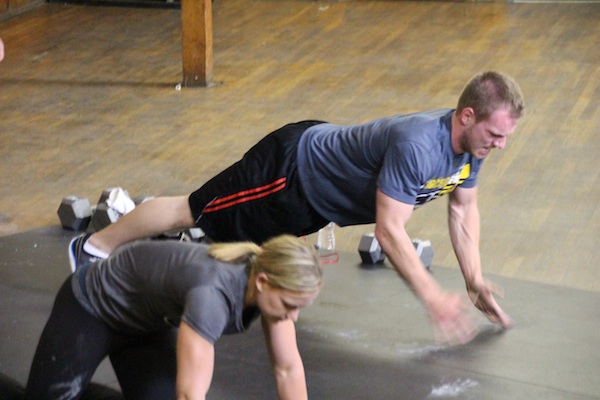 Guest Post by Tyler Bramlett, Creator of the CT-50 System
Guest Post by Tyler Bramlett, Creator of the CT-50 System
One of the most common mistakes people make is getting married to the idea that the only way you can progress with your training is by increasing the amount of muscle you have or how much weight you can lift. While it’s nice to stand in front of the mirror and know for certain that you’ve packed on a few pounds of lean muscle or shed some unwanted body fat, there’s another area where you can make some serious gains.
You see, strength training is critical. I’m by no means trying to discount the positive benefits you get from lifting heavy bars and dumbbells. I am, however, urging you to consider that strength is only one piece of a larger puzzle. And if you wanna get strong, move well, stay or become pain free, and still look good naked into your older years, then you have to step outside of the box and work on an entirely different aspect of training. Let me explain…
To me, the #1 thing we need to look at if you want the whole package — to look, feel, and perform better — is the signals you’re sending your body. All training is about adaptive signals, and every change you see in your body is a result of the process of adaptation. Because of that, there’s only two real ways you can train:
• The first is to strengthen your control over external objects (i.e. lifting heavy shit).
• The second is to strengthen your control over your own body (i.e. bodyweight movement progressions).
When we simplify training into these two areas and focus only on what signals you send your body, it becomes easy to understand the simple principle that form (the way you look) follows function (the way you train).
After all, who do you think would look, feel, and perform better?
Person A – Who can do rapid fire jumping lunges, clap pushups, one arm snatches, and explosive pullups
Or…
Person B – Who can only do basic bodyweight squats, kneeling pushups, light dumbbell rows, and sucks at the deadlift
Ok, maybe I’ve made it too easy, but I wanted to drive home my point and make it crystal clear what I am talking about when it comes to the principle of form follows function.
Here are the FACT’s…
The more control you have over your movement capacity — external (as in the case of lifting weights) or internal (as in the case of bodyweight training) — the better you will look, feel, and perform.
So, how do you make constant gains by inserting Progressive Movement Technology™ into your workouts?
It’s really quite simple.
First, start with the basic movements of the human body—things like squats, deadlifts, presses, pulls, pushes, rows, and core stability. And second, create a series of more difficult variations for each of the exercises.
Here are examples for both bodyweight and weighted movement progressions. Once you can do 3 sets of 10 reps on each (A) exercise, simply move on to the next variation (B, C, D, etc.) until you can again do 3 sets of 10 reps of the new exercise..
BODYWEIGHT EXAMPLE:
(A) Kneeling Pushups —–> (B) Regular Pushups —–> (C) Clap Pushups —–> (D) Vertical Pike Presses —–> (E) Handstand Pushups
WEIGHTED EXAMPLE: (Use The Same Weight For Each)
(A) Deadlift —–> (B) One Arm Deadlift —–> (C) One Arm Swing —–> (D) One Arm High Pull —–> (E) One Arm Snatch
As you can see, in both of these cases the weights you are moving and/or your bodyweight do not change. Instead, the complexity of the movement changes. The reason this is so powerful is because of the way your nervous system responds to adaptations of movement complexity.
Imagine unlocking new strength and coordination in your muscles that you might not even know you have.
And the best part…
You don’t have to stop training the way you currently love! In fact, you can continue your training program and just add 10-20 minutes of progressive movement cross training 2-3 times each week to get great results!
The key with progressive movement training is to consistently up your game by mastering one movement and then simply moving up the ladder to the next, more difficult movement. The amount of time doesn’t really matter, only that you keep moving forward.
By adding this style of training to your workouts, you’ll allow your body to adapt to movements you might not normally do. Along the way, you’ll build a body that looks, feels, and performs the best it possibly can.
***
If you’re into learning more ways to include progressive movement training into your workouts and tack them onto the end of hard training sessions check out Tyler’s NEW CT-50 system.
NOTE: Jay is no longer accepting guest post. Please do not submit a request for one.



